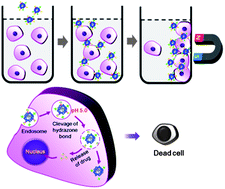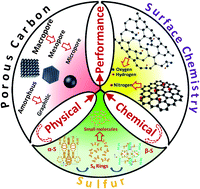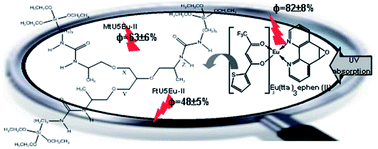This month sees the following Journal of Materials Chemistry C articles that are in the top ten most accessed from July – September:
Oxadiazole- and triazole-based highly-efficient thermally activated delayed fluorescence emitters for organic light-emitting diodes
Jiyoung Lee, Katsuyuki Shizu, Hiroyuki Tanaka, Hiroko Nomura, Takuma Yasuda and Chihaya Adachi
J. Mater. Chem. C, 2013,1, 4599-4604
DOI: 10.1039/C3TC30699B
Solution processed metal-oxides for organic electronic devices
Kirill Zilberberg, Jens Meyer and Thomas Riedl
J. Mater. Chem. C, 2013,1, 4796-4815
DOI: 10.1039/C3TC30930D
Ternary and quaternary metal chalcogenide nanocrystals: synthesis, properties and applications
Dmitry Aldakov, Aurélie Lefrançois and Peter Reiss
J. Mater. Chem. C, 2013,1, 3756-3776
DOI: 10.1039/C3TC30273C
Stimuli-responsive molecularly imprinted polymers: versatile functional materials
Shoufang Xu, Hongzhi Lu, Xiuwen Zheng and Lingxin Chen
J. Mater. Chem. C, 2013,1, 4406-4422
DOI: 10.1039/C3TC30496E
Structure–processing–property correlations in solution-processed, small-molecule, organic solar cells
Benjamin H. Wunsch, Mariacristina Rumi, Naga Rajesh Tummala, Chad Risko, Dun-Yen Kang, K. Xerxes Steirer, Jeremy Gantz, Marcel Said, Neal R. Armstrong, Jean-Luc Brédas, David Bucknall and Seth R. Marder
J. Mater. Chem. C, 2013,1, 5250-5260
DOI: 10.1039/C3TC30774C
Fluorinated 9,9′-spirobifluorene derivatives as host materials for highly efficient blue organic light-emitting devices
Zhanfeng Li, Bo Jiao, Zhaoxin Wu, Peng Liu, Lin Ma, Xiaoli Lei, Dongdong Wang, Guijiang Zhou, Huaiming Hu and Xun Hou
J. Mater. Chem. C, 2013,1, 2183-2192
DOI: 10.1039/C3TC00466J
Plant leaf-derived fluorescent carbon dots for sensing, patterning and coding
Liangliang Zhu, Yongjin Yin, Cai-Feng Wang and Su Chen
J. Mater. Chem. C, 2013,1, 4925-4932
DOI: 10.1039/C3TC30701H
Two-dimensional semiconductors: recent progress and future perspectives
Xiufeng Song, Jinlian Hu and Haibo Zeng
J. Mater. Chem. C, 2013,1, 2952-2969
DOI: 10.1039/C3TC00710C
Photochemical stability of electrochromic polymers and devices
Jacob Jensen, Morten V. Madsen and Frederik C. Krebs
J. Mater. Chem. C, 2013,1, 4826-4835
DOI: 10.1039/C3TC30751D
Reduction of graphene oxide to highly conductive graphene by Lawesson’s reagent and its electrical applications
Hongtao Liu, Lei Zhang, Yunlong Guo, Cheng Cheng, Lianjiang Yang, Lang Jiang, Gui Yu, Wenping Hu, Yunqi Liu and Daoben Zhu
J. Mater. Chem. C, 2013,1, 3104-3109
DOI: 10.1039/C3TC00067B
Why not take a look at the articles today and blog your thoughts and comments below.
Fancy submitting an article to Journal of Materials Chemistry C? Then why not submit to us today!
Comments Off on Top 10 most-read Journal of Materials Chemistry C articles – Q3 2013



















